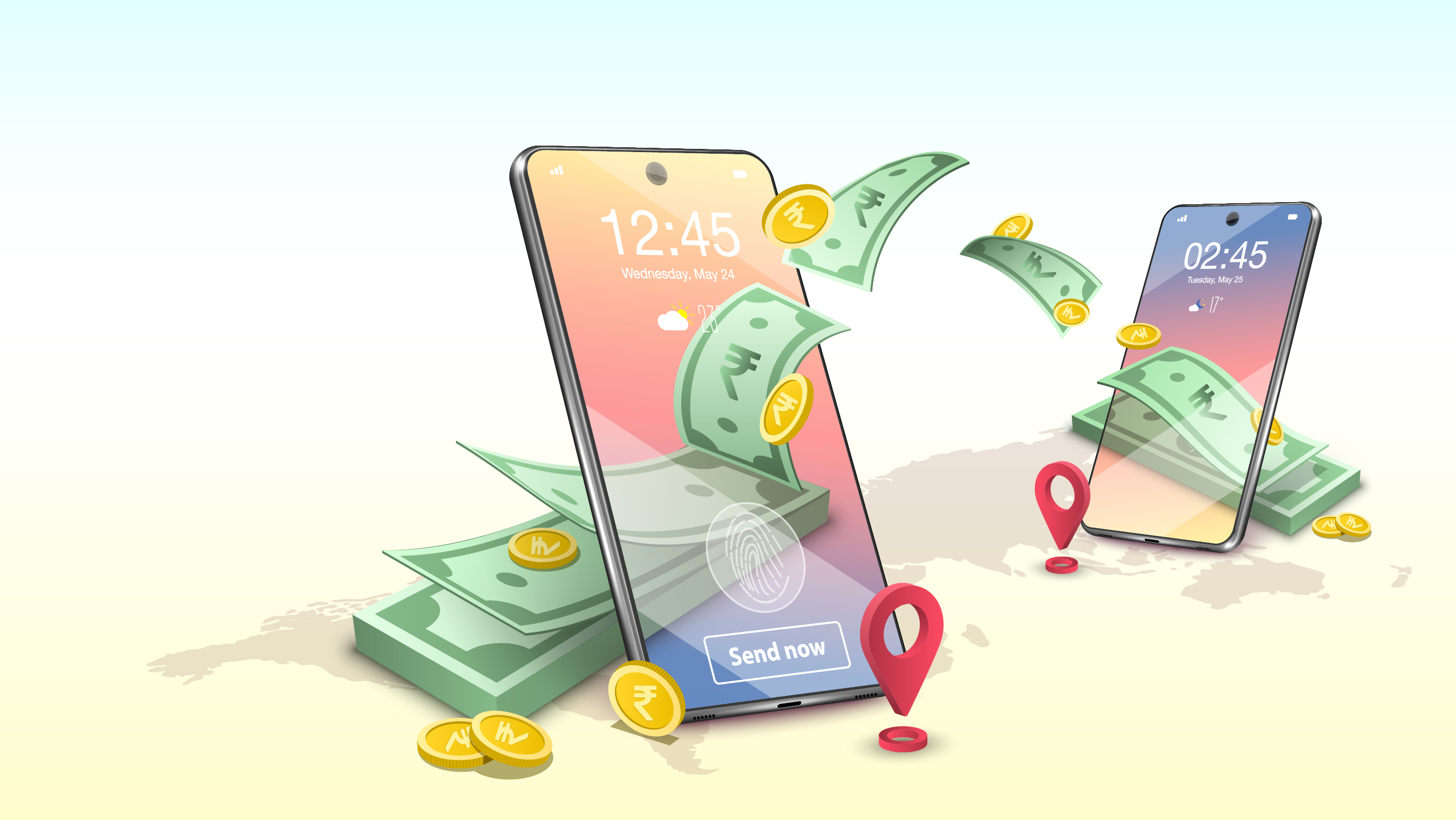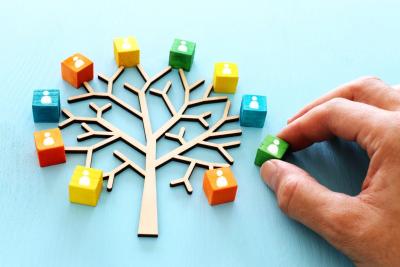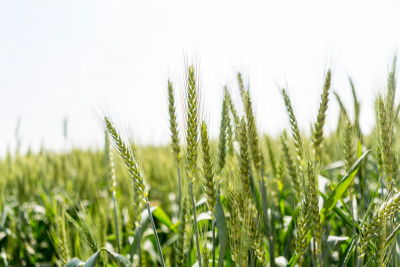We use cookies to make your experience better. To comply with the new e-Privacy directive, we need to ask for your consent to set the cookies. Learn more.
Digital Interactions, Ambient Payments: The Future of Money

When watershed events like demonetisation and the COVID-19 pandemic occur, the common element is a forced shift in our human way of living, which causes an automatic change in behaviours. In coping with such severe circumstances, we seek the easiest options that allow us to continue to live normally. In the last year or so, digital payments have been that option for most people.Digitisation has enabled and empowered human society, ushering in the future in the experience of our present. This fundamental shift has changed the way people pay, get paid, and donate money.
When the pandemic struck, PayPal went from 72 global offices to 39,000 home offices worldwide. Like companies everywhere, we worked to ensure the safety, health, and productivity of our employees. Once we were confident that our people were properly situated and productive, we turned our focus to the increased demand and relevance of our company and its products as people were forced to stay at home. We went on the offensive and formulated strategies to help maximise digital giving.
Throughout the history of human evolution, money has been created and recreated many times in many places. As it represents the value of a product or service, the concept of money is much older than and goes beyond physical coins and banknotes. Managing money today is like moving electronic data from one device to another, a process that makes it possible for people all over the world to exchange goods and services every second.
But before we discuss the untapped potential of digitisation, while anticipating the unknowns that lie ahead, it will be interesting to look at how we got here.
A Brief History of the World through the History of Money
Electronic money movement is more than five decades old. E-commerce simply popularised it, and made it more accessible, and the pandemic made it essential. But managing and moving money, or for that matter, value, is as old as humankind. The shift from the barter system in the early days to the exchange of shells and gems, to the invention of coinage and currencies, occurred over thousands of years. But human society has continuously been propelled by revolutions in science and industry. Cards were invented less than a hundred years ago, and e-commerce about 25 years ago—very small durations of time in the vast history of evolution of money.
These inventions became widespread and inspired more developments, and the adoption of mobile technology accelerated things faster than previously imagined. In the world of payments, the future is already here, but it is not equally distributed. Some regions may be more ahead than others in their journey to digital, as cash is still an important part of many economies. But the physical form of cash now emerges as the biggest carrier and transmitter of the very thing that has kept us locked up for more than a year. In that sense, digital payments are no longer just a matter of convenience, security, or ubiquity, but a matter of health.
Over the next decade, we can expect to see a rise in digitisation in the contexts where we manage and move money. The world of payments will see further acceleration, but it is going to be a world that is more inclusive than it has been in the past. Digital payments will continue to grow in their reach, acceptance, safety, and convenience.
Pragmatic Convergence
In the early cycle of innovation, several products and services are introduced by unique players, all of whom try to create their own exclusive value propositions. This is a very healthy prospect for the customer, as it gets them the best value. But as these paradigms mature, you see the convergence of technologies and services.
Just like in the physical world where people carry one wallet with multiple financial and loyalty instruments, they will begin to carry a single wallet in the digital world. A single unified digital wallet that can hold multiple financial instruments for use in different places, and that will maximise the reach of people’s money for the things that they desire.
The best way to term this would be “pragmatic convergence”—through deduplication, mergers and acquisitions—where companies will become one over time. We’ve seen this happen in the banking industry. A quick look at the history of banks in the western world over the last 50 years reveals that there were more than 50 banks. Today, there are four main ones[1].
Another example of pragmatic convergence can be seen in the mobile phone world. Today, iOS and Android are the two main players in mobile operating systems. While there are various flavours of Android, which enable people to create and develop more unique devices and apps, we are likely to see an increasing number of consolidations and mergers that will offer one holistic customer experience. The reason for this is not purely the competitive economics in the industry, but the demand from the customer. Customers will no longer want to manage ten different wallets and payment systems—they will want to manage one and they would like it to be safe, convenient, easy, ubiquitous and private.
In October of 2020, PayPal’s Blockchain, Crypto and Digital Currencies Business Unit (BCDC), introduced a feature to “buy-sell-hold” four cryptocurrencies in the PayPal wallet[2] in the US. This service resonated with our customers, and in March 2021, PayPal announced Checkout with Crypto, enabling PayPal customers in the US to checkout with cryptocurrency alongside other payment methods in the PayPal wallet. In April 2021, we released this feature to “buy-sell-hold” crypto currencies on Venmo[3], a separate app under the PayPal umbrella.
Our intent is to participate, experiment, learn, educate, and share the digital currency space in partnership with our customers, so that we can help shape it as it evolves. We have the aspiration of being the payments operating system for the planet which can leverage every kind of currency and allow people to use it on our platform.
The Future is Now
Digitisation is growing to include every device and interaction around us, whether it is your smartphone (which continues to become smarter), or your smart speaker, smart refrigerator, or smart car. These products and devices will become modes of interaction for commerce; and payments in those contexts will happen ambiently, where you, the customer, don’t have to take the explicit action of swiping, inserting or tapping a card, or filling in a 16-digit number and a CVV Code. Payment will happen through the right kind of identity linking in a private context, with the right level of security, where you express an intent to purchase a product or a service, and the payment goes through in the background. Payment is no longer an action you need to take.
This is a future that is already here, and we are currently experiencing it. Let me give you some examples.
When you took a rideshare pre-pandemic, in much of the world, you did not pay for the ride. You expressed the intent for a ride by booking it on the application from your smart device; and when the ride was completed, the payment automatically went through from your ewallet; you did not have to undertake the explicit act of paying.
Most of the places where we use digital payments today are a replacement for the physical world. When you go to a store, you might use your card with an NFC tap or a QR Code; and when you’re buying something online, the web purchase is a replacement for the store that you physically visited previously.
Commerce is going to begin to happen in contexts that you probably did not consider before. One area where we are seeing this happen is in the subscription economy, where payments to countless services happen regularly and automatically. While we are working to deliver efficient and secure services to our customers, we also evolve with their changing needs.
A Good Yesterday is Not Good Enough Today
While user experiences of payments have been digitised, the back-end and back-office still run on very traditional infrastructure. This infrastructure is complex, slow, expensive, and not fully inclusive. Digitisation of currencies, as I see it, offers an opportunity to rethink, rebuild, and re-engineer the payments space to address these challenges. These forays also offer a proof of concept, the principles of which can be leveraged for collaboration across nations, platforms, and customers to democratise financial services in the future.
There are many paradigms that are similar in our physical and digital worlds. For instance, you will not leave the key to your house in a random place where other people can find it; and you also would not use a lock that is very simple to break. These are factors that apply to your cyber world as well. We need to understand that our digital life requires a certain number of protections, because there are bad actors constantly inventing new ways to commit fraud. As customers, remember to have strong authentication systems and passwords, and where possible, put two locks on your systems—in your digital as well as physical lives.
Consumer awareness is very critical, and companies have a big role to play in this—protecting customers as a priority, offering them easy to use (but hard to crack) security features, and ensuring that customers understand how security works in the digitised world.
Security Always Comes First
At PayPal, we prioritise cybersecurity first and foremost in our technological systems. Internally, whenever we talk about technology, we strive to deliver security, scalability, stability, speed, and subsidy, in that order, where security always comes first. We operate PayPal with the belief in zero trust security. We build our systems to expect hostile environments and assume that the worst can occur any second.
Our focus on security is an important value stream that we continue to deliver on because we believe that a good yesterday is not a good enough today. Naturally, security and trust are areas of high investment and innovation at PayPal—and on behalf of our customers and employees—we strive to make sure that everyone is protected, safe, and secure at all times.
The rising concerns regarding customer privacy and cybersecurity are a true reflection of the critical importance of digital experiences. The landscape and patterns of threat actors are changing every day. We have everyone from nation states to organised crime to a bored student in a college dorm trying to attack companies and customers. In this dynamic scenario, how the threat landscapes evolve and how we safeguard against them will require new paradigms of thinking, not just through small modifications to existing approaches but through a literal reimagining of how we do security. This is the number one challenge that fazes the payments industry.
And it is also where industry collaboration is the right approach, where we all need to see the enemy as a common one. This is a place where companies need to see beyond themselves and think about the customers, innovate on their behalf, and secure all customer experiences, regardless of the digital payments platform they use.
I believe that it is absolutely possible to have safe, secure, convenient, trusted, inexpensive, public and private players in the world of digital payments. The awakening of consumers, companies, and countries with regard to cybersecurity and privacy is a force that can contribute to making cybersecurity a fundamental right.
Together We Can Go Further
PayPal has made significant investments in partnerships over the years—from card networks like Visa and Mastercard, to technology companies like Google, to marketplaces like AliExpress and Mercado Libre. We think of collaboration as being the new normal in today’s business world—one that is inclusive, innovative, global, and responsible.
The global ecosystem of payments is interoperable—functioning between consumers, merchants, banks, networks, acquirers, processors, platforms, marketplaces, regulators, and governments—all of whom are participants in the ecosystem. There are various players up and down the payment stack and it is this diversity that makes for healthy competition, empowering all to innovate on behalf of the customer and deliver an experience of high value, one that customers desire and deserve.
The journey of modernising through digitisation and democratising financial services requires all of us to both compete and collaborate. These services are capable to make moving and managing money easy, safe and affordable for anyone in the world. That is the way to deliver the best innovations to the industry. It is humbling to realise and accept that while none of us can do everything, with the right kind of partnerships, all of us can achieve more, and do it better.
[1] Goldberg, M. (n.d.). These Are The 15 Largest Banks In The US. Bankrate. https://www.bankrate.com/banking/biggest-banks-in-america/.
[2] Browne, R. (2020, October 21). PayPal gets into crypto with new features for trading and shopping. Retrieved from https://www.cnbc.com/2020/10/21/paypal-gets-into-crypto-with-new-features-for-trading-and-shopping.html?&qsearchterm=paypal%20buy%20sell%20hold
[3] Browne, R. (2021, April 20). Venmo users can now buy and sell bitcoin and other cryptocurrencies. Retrieved from https://www.cnbc.com/2021/04/20/bitcoin-paypals-venmo-launches-cryptocurrency-buying-and-selling.html





